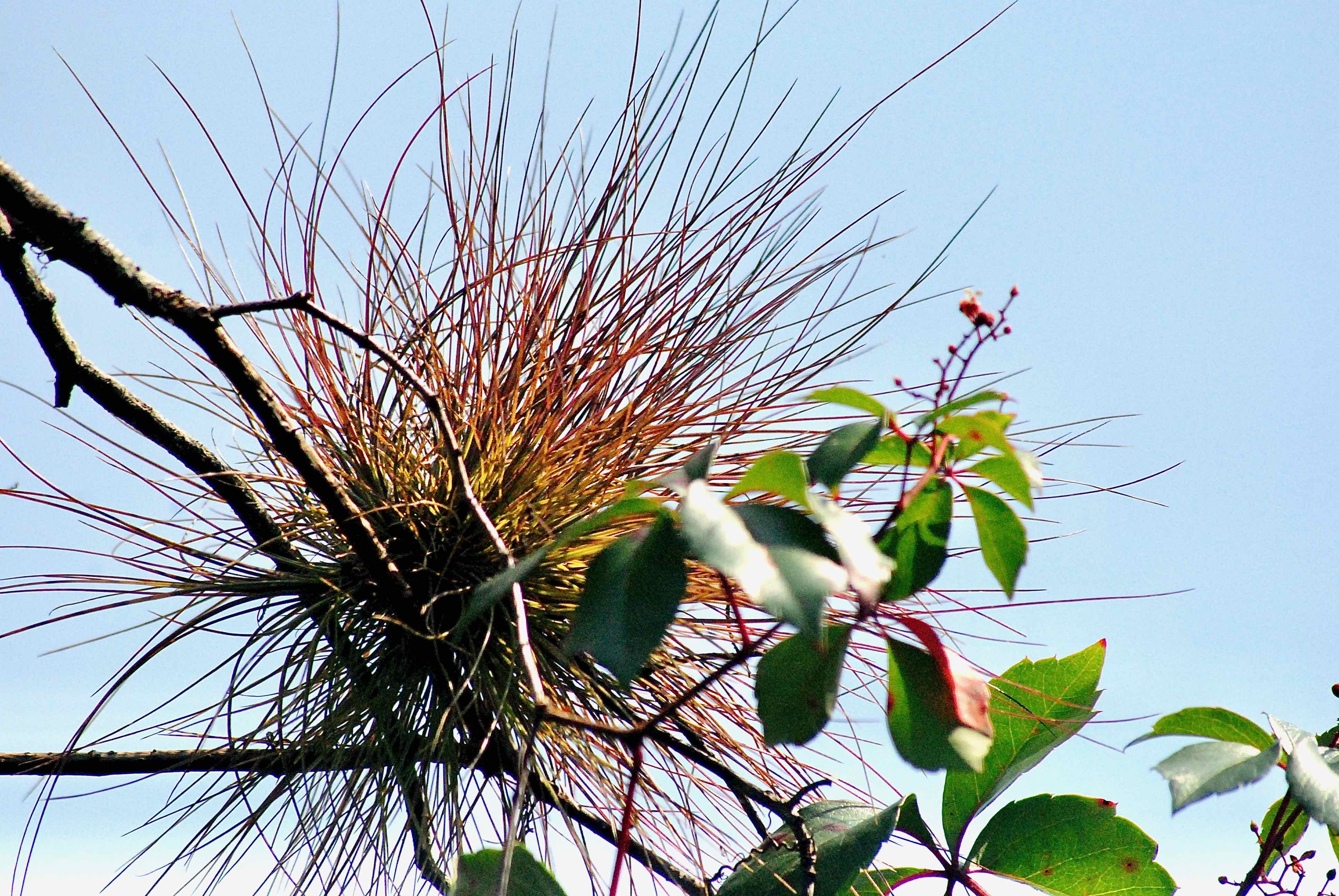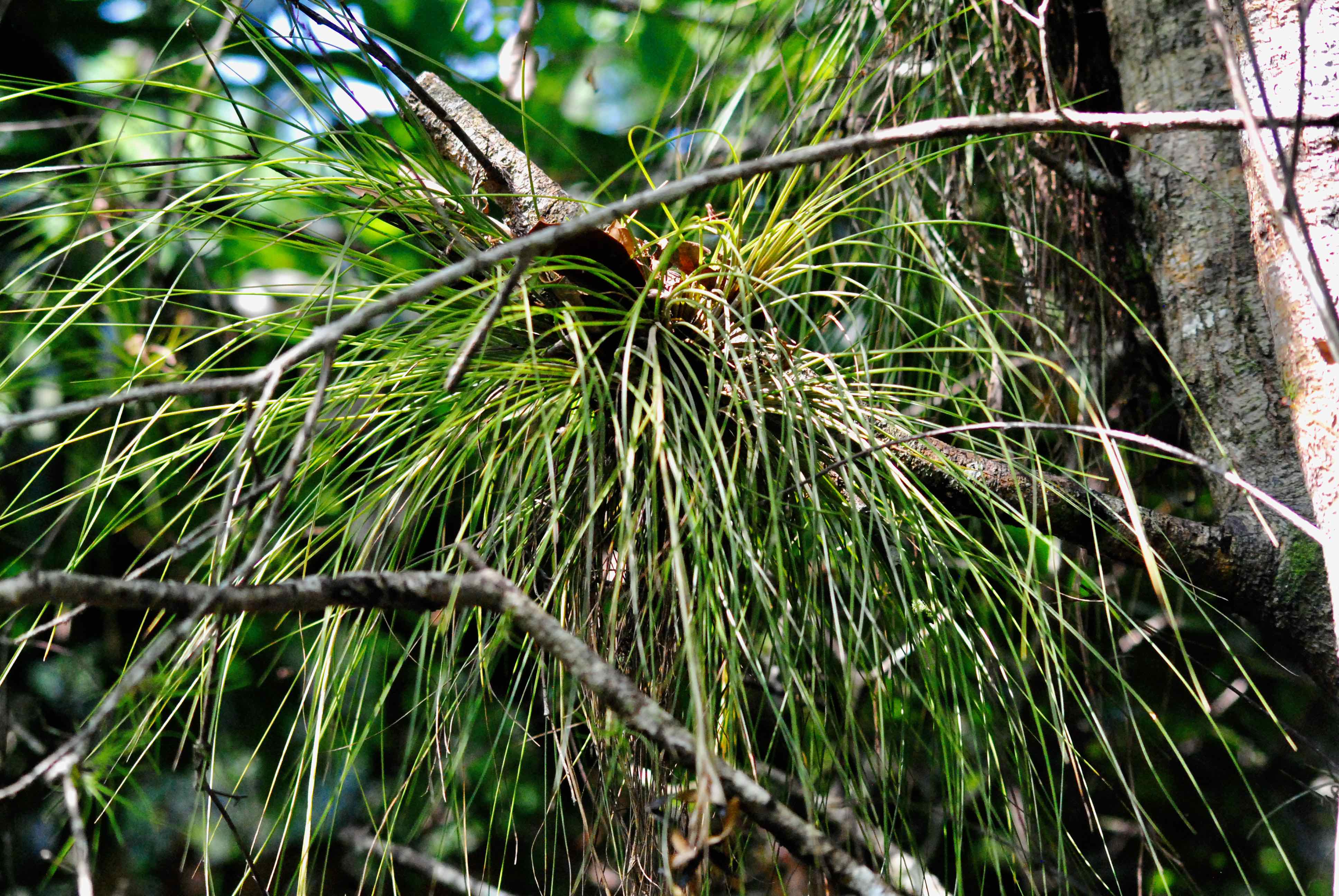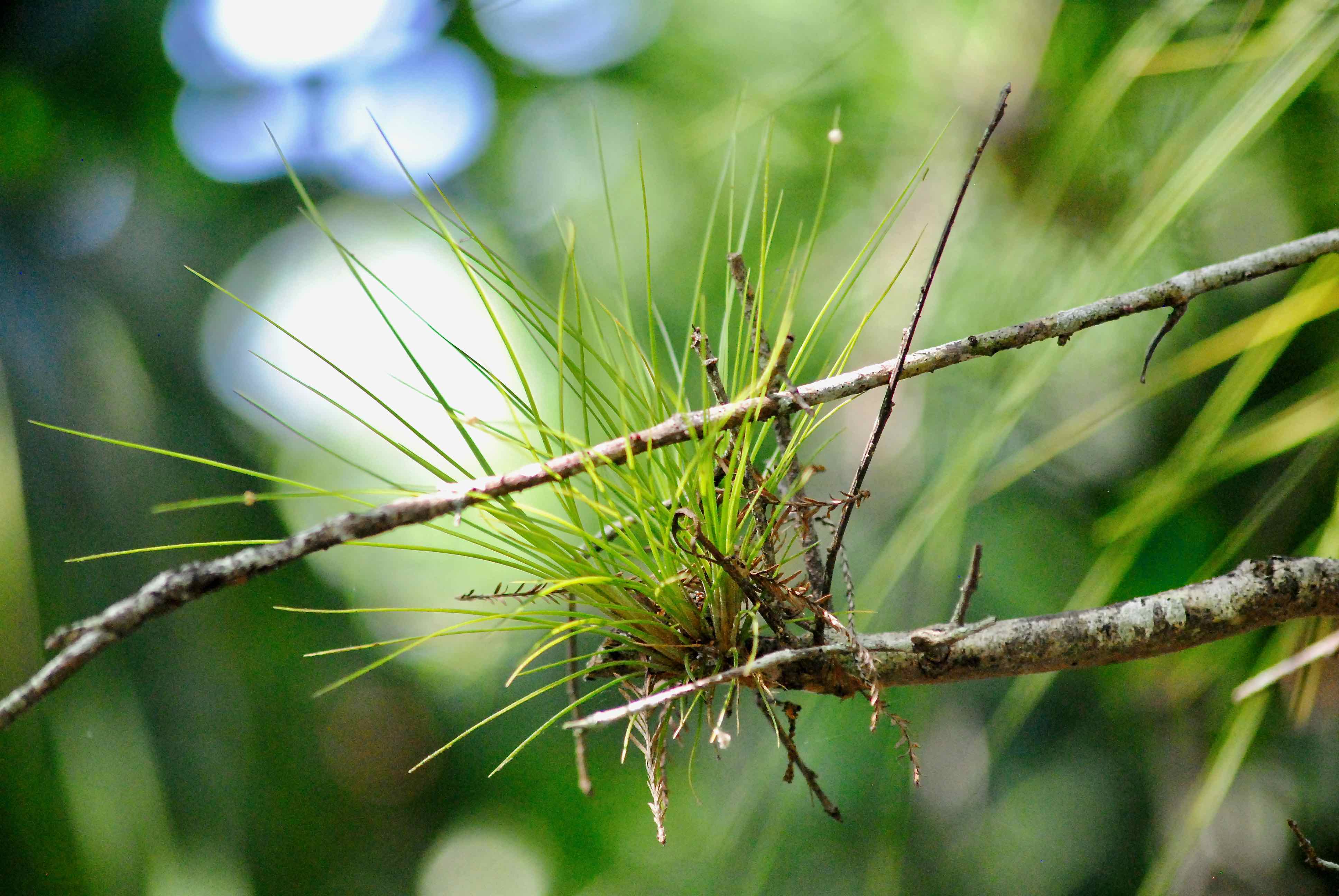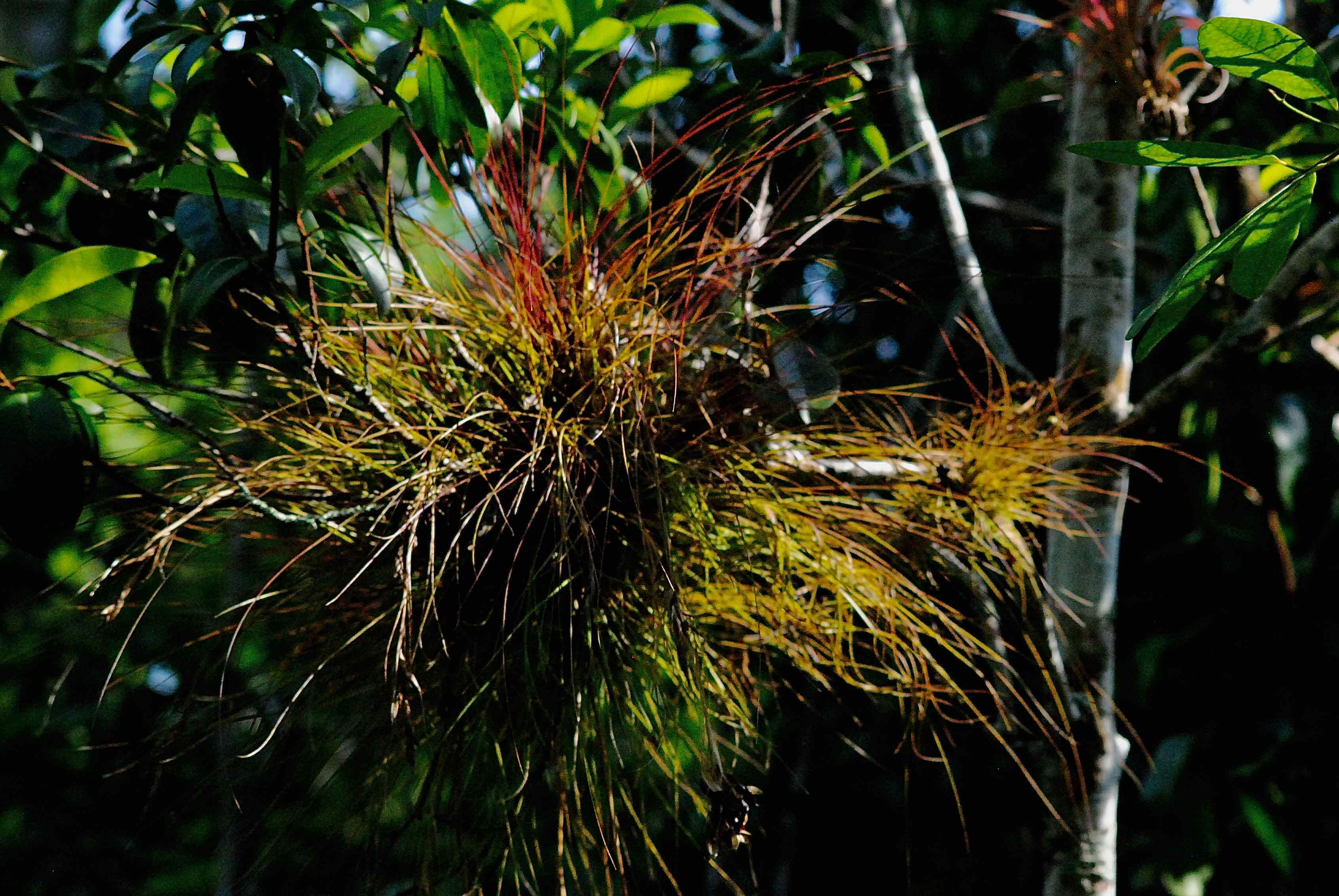
Southern needleleaf, photographed at Fern Forest Nature Center, Cocounut Creek, Broward County, in May 2014.
At first glance, Southern needleleaf, Tillandsia setacea, might appear to be nothing more than detritus from a nearby pine, a collection of discarded needles improbably snagged in the branches of a nearby tree.
Look again. The detritus is very much alive. Look close enough at the right time of year and you might see that its even in bloom. But if it's alive, what is it, and how did it get there?
Southern needleleaf is an epiphyte, an air plant, that takes up residence in the branches or on the bark of a tree, be it cypress, live oak or another species altogether. It is not a parasite; it does not take anything from its "host" or harm it in any way. Instead, it takes in moisture and minerals from the air and from whatever falls into it through special disc-shaped structures on its leaves called trichoma.
It is a bromeliad, a member of Bromeliaceae, a family of epiphytes that includes Spanish moss and ballmoss. The pineapple is a member of the family. All in all, there are 16 members of Bromeliaceae native to Florida. Some are quite rare; 10 of the 16 are legally classified as threatened or endangered because of loss of habitat, illegal plant collecting or attack by a bug called the Mexican bromeliad weevil.
Fortunately for the species, southern needleleaf is fairly common and considered secure. It is in fact a Florida native found throughout the Peninsula roughly from Volusia County south to the Keys. It's also found in a few counties in southeastern Georgia. It has a scattered range that includes parts of the Caribbean, including the Caymans, Cuba, Hispaniola, Jamaica and Puerto Rico, parts of Mexico, Guatamala and one state in northeastern Brazil.
Southern needleleaf is distinguished by its long, pine needle-like leaves, which go between six and 12 inches in length. Some describe the plant as looking like a cluster of knitting needles. It also vaguely looks like shoestring fern, but the leaves of southern needle leaf are stiff, while shoestring fern is flaccid. The leaves are green but turn deep red when exposed to sunlight. By the way, it's the larvae of the Mexican bromeliad weevil that damages and ultimately kills its host by tunneling into the leaves. Our guy's needle-like leaves are too thin for the deadly pest to burrow into.
It produces small, delicate violet-colored flowers atop a spike that can be a foot long. Bloom time is early spring into late fall. The seeds that follow are fluffy, dispersed by wind and intended to be snared on the bark of a tree or caught in the branches.
It likes moist places; favorite habitats include hammocks and swamps. It tends to grow in clusters and prefers light shade. It is cultivated; some online nurseries market it as a house plant as well as for outdoor planting.
Other common names for southern needleleaf include thin-leaved wild pine, needle leaf airplant and needle-leaf wild pine. It's also spelled southern needle-leaf. As noted above, it's a member of Bromeliaceae, the bromeliad family, which includes pineapples and Spanish moss.
Click on photo for larger image
Links for Southern Needleleaf



